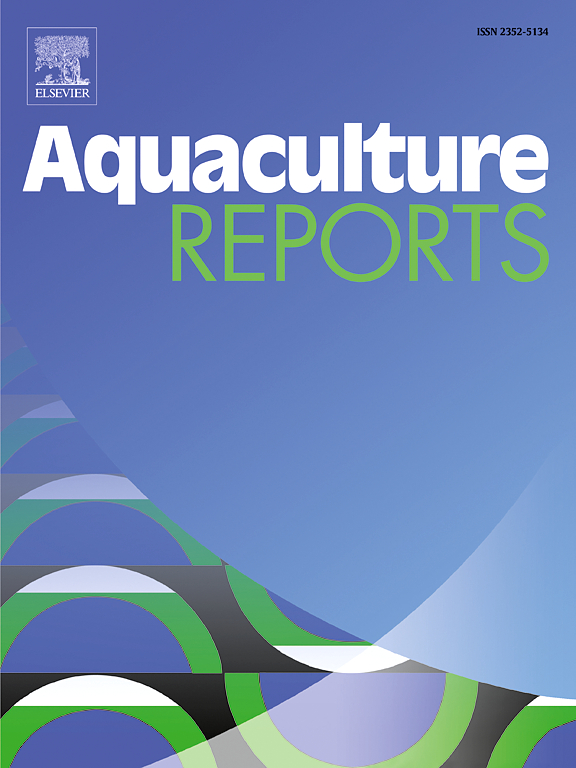Exploring the physiological and biochemical mechanisms underlying growth rate variability in Hong Kong oyster (Crassostrea hongkongensis)
IF 3.2
2区 农林科学
Q1 FISHERIES
引用次数: 0
Abstract
The Hong Kong oyster (Crassostrea hongkongensis), a key aquaculture species in southern China, has significant potential for enhancing profitability through increased growth rate. In this study, we examined the physiological and biochemical characteristics of the large-size (SL) and small-size (SS) from the selected strain, as well as the large-size (CL) and small-size (CS) from the wild population. The results revealed that the oxygen consumption rate (OCR) and ammonia excretion rate (AER) of the SL and CL groups were significantly lower than those of the SS and CS groups (p < 0.05). The O:N ratio in the SL and CL groups ranged from 8.10 to 8.19. In contrast, the SS and CS groups exhibited O:N ratios of 1.17–2.69. Compared with other groups, the SL group showed a significantly higher condition index (2.65 ± 0.22) and scope for growth (59.57 J h–1 g–1) (p < 0.05). Significantly elevated activities of α-amylase and lipase (341.71 μg/min/mg prot and 363.83 nmol/min/mg prot) were observed in the SL group compared to the CL and CS groups (p < 0.05). Both digestive enzyme activities (including pepsin, 32.00 U/mg prot), as well as pyruvate kinase and succinate dehydrogenase activities (1.30 nmol/min/mg prot and 7.61 U/mg prot), peaked in the SL group. Our research findings revealed that, compared to the small-size, the large-size within the two populations exhibit lower metabolic costs, higher digestive and absorptive capacities, and efficient ATP production capabilities. Notably, the metabolic efficiency is lowest among the large-size in the selected strain, whereas digestive efficiency and energy utilization rates are at their peak. These discoveries underscore the significance of digestive and metabolic efficiencies in the growth variation of oysters and offer insights into improving aquaculture strategies.
求助全文
约1分钟内获得全文
求助全文
来源期刊

Aquaculture Reports
Agricultural and Biological Sciences-Animal Science and Zoology
CiteScore
5.90
自引率
8.10%
发文量
469
审稿时长
77 days
期刊介绍:
Aquaculture Reports will publish original research papers and reviews documenting outstanding science with a regional context and focus, answering the need for high quality information on novel species, systems and regions in emerging areas of aquaculture research and development, such as integrated multi-trophic aquaculture, urban aquaculture, ornamental, unfed aquaculture, offshore aquaculture and others. Papers having industry research as priority and encompassing product development research or current industry practice are encouraged.
 求助内容:
求助内容: 应助结果提醒方式:
应助结果提醒方式:


